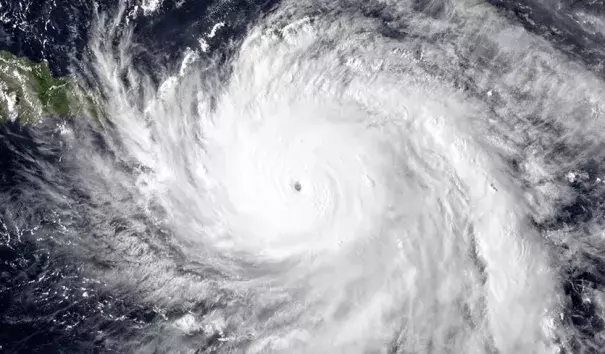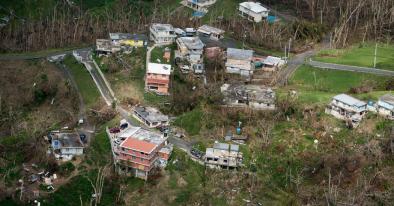Climate Change Made Hurricane Maria’s Heavy Rains Nearly 5 Times More Likely to Occur

Hurricane Maria dropped more rain on Puerto Rico than any storm to hit the island since 1956—a feat that was made more likely by nearly a factor of five due to human-caused climate change, new research says. Maria smashed into Puerto Rico on September 20, 2017, as a high-end Category 4 storm with 155 mph winds. Maria’s winds, extreme rains, and storm surge did catastrophic damage estimated at $92 billion, and was America’s deadliest disaster of the past fifty years, with the official estimate of the direct-plus-indirect death toll at 2975.
Hurricane Maria’s torrential rains triggered massive flash flooding and landslides, with over 80% of the island receiving at least ten inches of rain in 48 hours. Widespread near-record and record river flooding was observed across the island, and streamflow data from the U.S. Geological Survey showed that 53 out of 65 river gauges in Puerto Rico met or exceeded flood stage. Among these rivers, 30 exceeded major flood stage, while 13 reached or exceeded their all-time record level.
...
“What we found was that Maria’s magnitude of peak precipitation is much more likely in the climate of 2017 when it happened versus the beginning of the record in 1950,” said Keellings. “Due to anthropogenic climate change it is now much more likely that we get these hurricanes that drop huge amounts of precipitation.”
...
“Some things that are changing over the long-term are associated with climate change – like the atmosphere getting warmer, sea surface temperatures increasing, and more moisture being available in the atmosphere – together they make something like Maria more likely in terms of its magnitude of precipitation,” Keellings said.
Related Content





